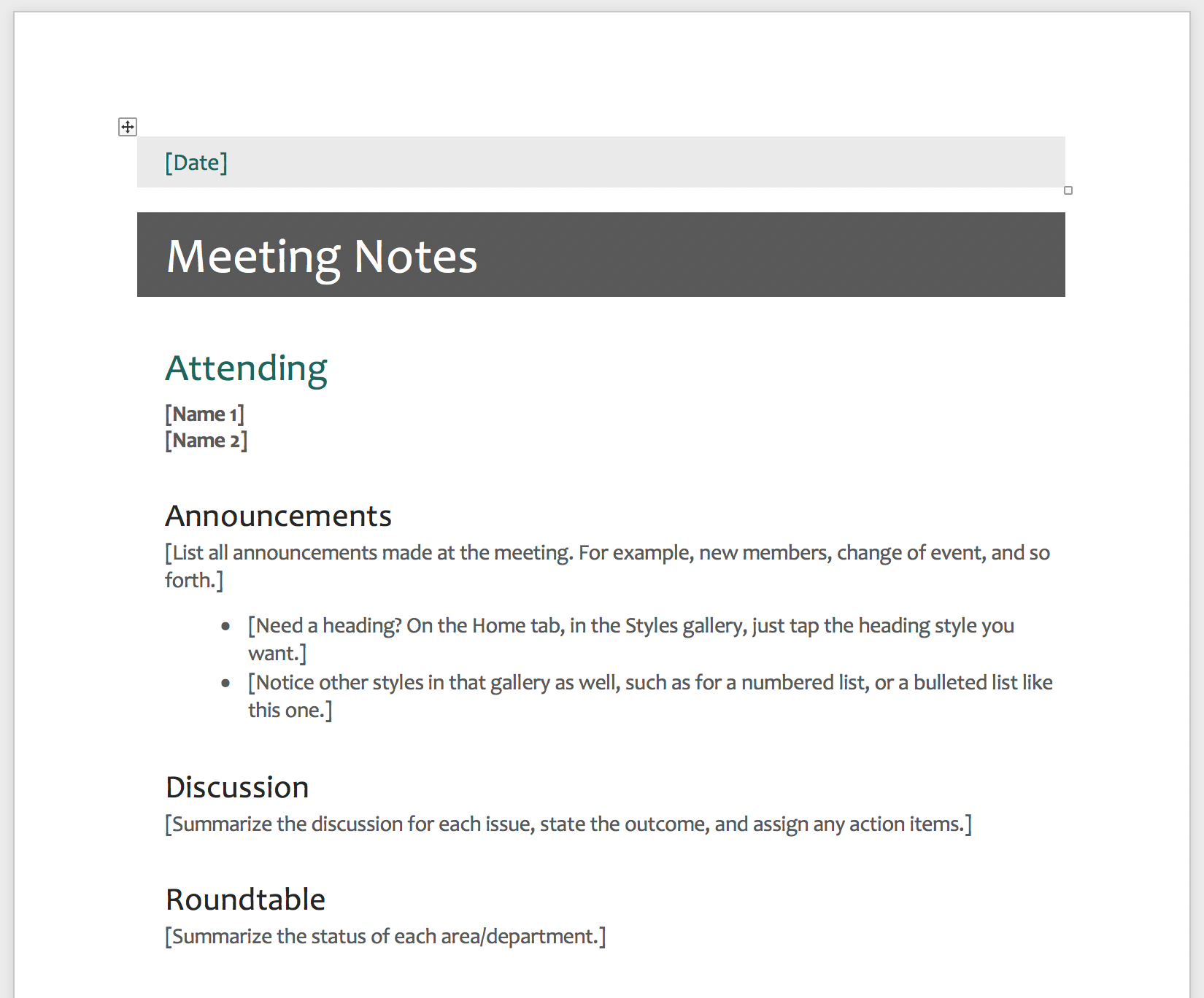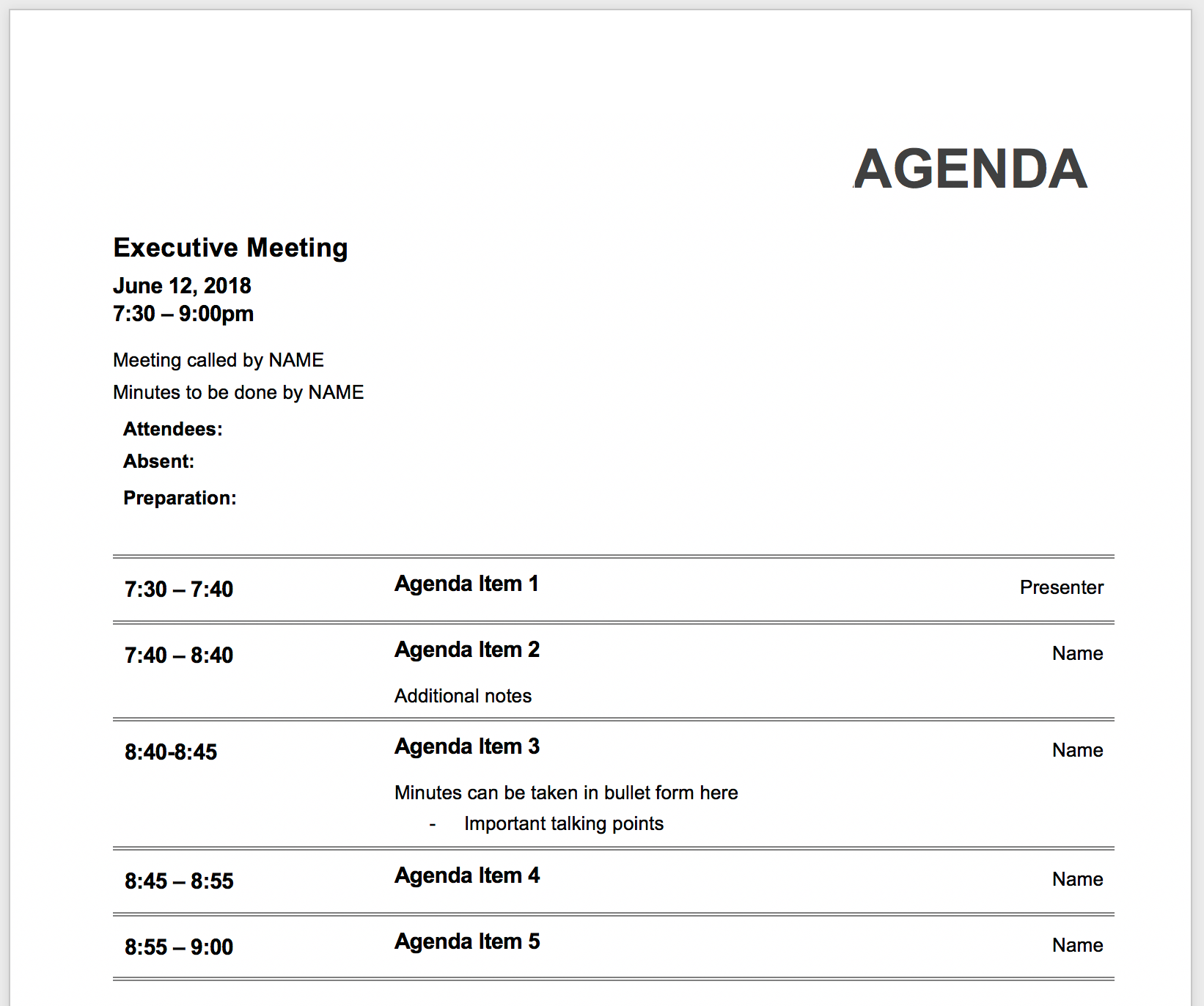The Dos and Don’ts of Meeting Minute Templates
Unproductive meetings happen all the time, sometimes because people arrive unprepared and sometimes because people don’t contribute. But a sure-fire way of reducing the productivity of people’s workflow is to take bad minutes or take no minutes at all.

Unproductive meetings happen all the time, sometimes because people arrive unprepared and sometimes because people don’t contribute. But a sure-fire way of reducing the productivity of people’s workflow is to take bad minutes or take no minutes at all. Good meeting minutes have the potential to keep a meeting structured and on task as well as push people to accomplish their work, thus leaving a positive impact on the team even after the end of the meeting.
But just like most work, the task of taking ‘good minutes’ is difficult to define, and has no specific steps for success. Instead, good meeting minutes must be just as fluid as meeting discussions. That being said, there are certain guidelines to heed to create great minutes. There are certain guidelines to heed to create great minutes, and this article will address the structure of good minutes, and the templates available to enforce that structure to happen.
Wait, why do I need templates at all?
Templates can feel constricting at times and for this reason, you need to make them work for you, by designing them to your needs. In this way, templates provide a much-needed structure that can be kept consistent throughout long stretches of time. In short, templates provide structure to your minutes while you take them, ease of access to information by attendees, and are conducive to fast and painless audits when necessary.
How do I integrate minute templates into my meetings?
Integrating minute templates into meetings depends on your situation. If the company in which you work has a standard meeting template that everyone is recommended to use, its best to stick to what’s provided and familiar to everyone. When companies have templates in place it’s generally to streamline internal audits or for other legal concerns.
In cases where you can implement your own minute templates, the process is pretty simple. Just do it. There is, however, a small caveat to this. Minutes are all about the productivity and accountability of the team as a whole, so if you take minutes for a small team, ask their opinion on the meeting template that you selected simply to make sure they are onboard. If you take minutes for larger teams, you can ask the opinion of a few coworkers, but it doesn’t make sense to go around interrogating everyone, despite the prospect of discussing meeting minute templates being a thrilling one (you’ll get ‘em next time).
Components of a good minutes template
Next, before you select a template let’s discuss the sections of meeting notes that are imperative to minute perfection. First, take careful note of the logistics of the meeting. More concretely, ensure that you record the date, time, attendees, and in some cases the location of the meeting. Furthermore, the meeting’s objective should be clearly stated. While constructing the objective is something that should be done before the meeting begins, reiterating it at the beginning is a great way to align everyone’s intentions and make the most of the time allotted. Second, a well thought out, inclusive, but concise agenda is the backbone to any good meeting. It goes without saying that the agenda should be prepared before the meeting, but keep in mind the following:
- Follow up on all tasks from the previous meeting
- Consult teammates about specific questions they may want to go over,
- Everyone should have a copy of the agenda before the meeting begins.
For more information on writing high quality minutes take a look at Wild Apricot's sweet guide here.
Templates are a great way to organize minutes as a whole, and if leveraged correctly, can have a resounding effect. Third, a space for taking great minutes. Regardless of the software that you choose to write minutes on, it is imperative that you have the tools to produce great minutes. Make sure that you are comfortable writing quickly in this software and ensure that there aren’t any formatting bottlenecks. The minutes themselves should
- Use agenda items as headers
- Cover all important discussion points
- Document votes and motions (attribute votes when applicable)
- Insights and breakthroughs that may be revisited in the future
Fourth, keep close track of action items. All kinds of meetings, from junior progress meetings to executive board meetings, share the fact that action items must be produced by the end. If there are no follow up tasks required, chances are that either nothing was achieved during the meeting, or the stated objective was not effectively completed. The process of recording action items during a meeting is quite straightforward, but make sure that a bit of time is left at the end of each meeting specifically for discussion of action items so that everyone is well aware of their responsibilities. The difficulty of action items has little to do with them being recorded, rather the follow up required to keep everyone on the same page. A great way to do this is to integrate software that handles the accountability of action items. Once you connect all of these sections together, you can now make great decisions on which minute template is best suited for you. Below we will discuss four different potential meeting templates with emphasis on the good and the bad about each.
Basic Template

The first template on our list is a basic template provided by Microsoft. This template is very versatile but leaves a lot to be desired. Though it provides room for some logistics, the main emphasis is clearly on the minutes themselves as the agenda and action items are absent. This kind of meeting template would be good for quick informal meetings and recurring meetings where the agenda is constant.
Comprehensive Template

If you are looking for something with comprehensive coverage and structure, a template created for meetings at NYU could be the one for you! With room for every component mentioned above and more, if leveraged correctly, it would be difficult to create a bad set of minutes when following this template. The template is however quite heavyweight, so for more relaxed and informal meetings, feel free to slim it down to only include the parts that you find relevant.
Another Excel-lent Template

Text processors are not the only option for good meeting templates. Grid systems and tables (such as in Excel) can be great for keeping everything linear and organized. The template above separates every item out individually and attaches action items, responsibilities and due dates to a specific topic, as opposed to compiling them all at the end. This kind of template requires a small shift in how the meeting is carried out, with action items being considered throughout as opposed to the end of the meeting, but otherwise has a very versatile structure.
Time-Based Minutes Template

This last template places emphasis on cutting up meetings by time to stay on track. While guessing the amount of time that an item will take to cover presents a challenge, particularly in a brainstorming setting, meetings geared toward information dispersal and decision making can benefit greatly from realistic boundaries forcing the team to stay on task. Use this template to stay on track, but consider adding sections if you need something more comprehensive.
The importance of customizability
There are many more pre-created templates out there, for all kinds of meetings, but regardless where it is you get your template, make sure that it includes all the sections you personally require to facilitate good meetings and extract great information. Moreover, don’t feel pressure to stick to one particular meeting template if you have the option to switch around. Meetings are dynamic, and one specific template won’t work everywhere. Be attentive to what your team prefers and be proactive about increasing productivity. Now, with the necessary knowledge, tools and templates, go out and make your meetings awesome!
Thank you for stopping by!
